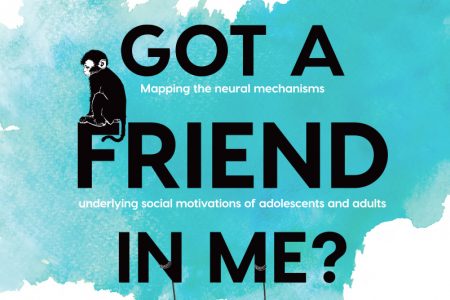What motivates adolescents?
Adolescence is marked by a peak in activity in the reward center of the brain. In our recent study, we found that various motivational factors contribute to these developmental changes from early adolescence to early adulthood.
Adolescence as a sensitive period for rewards
Adolescence is a sensitive period for brain development. Activity in the reward center of the brain, the ventral striatum, increases from early to mid-adolescence and is followed by a decrease until at least early adulthood. These developmental changes drive behaviors, like exploration and trying out new things, that are important for adolescents as they make their way to becoming independent adults. In our study, we found that the increase in reward activity in the ventral striatum from early to mid-adolescence was related to the motivation to pursue personal goals, and that the subsequent decrease from mid-adolescence to early adulthood was related to a decrease in the immediate pleasure experienced after receiving rewards.
The study
For this study, which was part of the so-called Braintime study, we recruited approximately 300 participants, all Dutch and aged between eight and twenty-nine years old, and scanned them three times over four years. To induce reward activity in the brain, participants played a coin toss game in which they guessed heads or tails. They won money if they guessed correctly and lost money if they guessed incorrectly. We examined brain activity when participants won money. The participants also indicated how much they liked winning in the game, which we refer to as a state-level measure of reward sensitivity, that is, that nice feeling you get when you win something (woohooh! I won!). Finally, participants indicated how much effort they were prepared to put into achieving desired personal goals, such as ‘when I want something I usually go all-out to get it’. This is referred to as a trait-level form of reward sensitivity, that is, someone’s general tendency to seek rewards.
Our results confirmed that reward activity increased from 8 to 16 years of age and then decreased from 16 to 29 years of age. Also, we found that (a) the motivation to pursue personal goals (trait) related to increases in activity in the reward center, and (b) the decrease in immediate pleasure experienced when winning a reward (the ‘I won!’- state) related to decreases in reward activity in the brain.
The motivational effect of reward sensitivity
These findings demonstrate that, on the one hand, the increase in reward activity in the brain from early to mid-adolescence may be related to the motivation to explore and push the boundaries to achieve personal goals that are of value for the individual. On the other hand, from mid-adolescence to early adulthood ventral striatum responses to rewards and how those rewards are valued seem to be more in balance: the decrease in pleasure derived from obtaining a reward was related to the decrease in ventral striatum reward sensitivity. In other words, the ‘I won!’ feeling decreased into young adulthood, which coincided with the decrease in reward activity.
Finally, I would like to point out that based on the statistical tests we used, we cannot conclude that the relation between brain activity and motivation and pleasure of winning differed between the younger participants (< 16 years) and the older participants (> 16 years). That is, we can only conclude that we found relations within these groups. This study's greatest strength is that we tested the same participants on three occasions, which makes the data very reliable. Overall, this study tells us more about what motivates adolescents and how they ultimately grow up to become independent adults.





